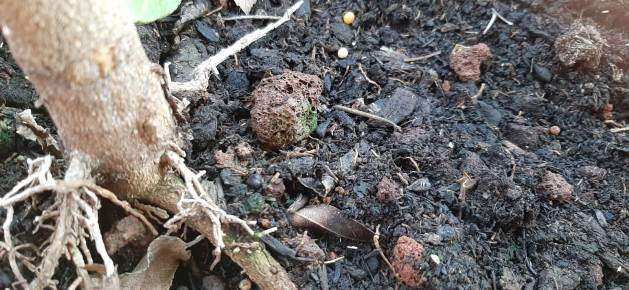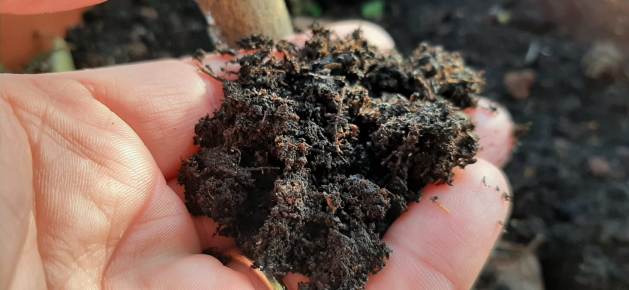As the Climate Crisis Bites, Soil Needs Doctors Too — Global Issues
ROME, Jan 26 (IPS) – In a wiser world, the term ‘treating someone like dirt’ would be a good thing. After all, 15 of the 18 nutrients essential to plants are supplied by soils and around 95% of the food we eat comes directly or indirectly from them, according to the United Nations Food and Agriculture Organization (FAO).
So dirt is actually a precious resource that deserves to be treated with respect, care and perhaps even a little love.
Unfortunately, humanity has been treating soil ‘like dirt’ in the traditional sense of the term, abusing it with pollution, unsustainable industrial agricultural practices and the overexploitation of natural resources.
The result is that about one third of the world’s soils are degraded, the FAO says. At this rate, 90% of all soils are set to be degraded by 2050.
“When we talk about soil health, we then get to human health,” Carolina Olivera, an agronomist with the FAO’s Global Soil Partnership (GSP),” told IPS.
“We are here now with high levels of soil degradation because of many factors, some natural. You can have soil erosion because there is a steep slope and water is circulating and taking all the sediments. But, above all, you can also have bad soil management, intensive practices, bad livestock practices with too many animals per hectare, and monocropping, so no rotation.”
“If we have monocropping, soils will not be in good health because the same crop is always extracting the same nutrients, so some nutrients will be missing. It’s the same as with human diets. If we always eat sugar, we will have too much sugar and not enough vitamins. Biodiversity is very important for everything, starting with soils and right the way up to our diets”.
The loss of soil fertility means that land is now less productive and many cereals, vegetables and fruits are not as rich in vitamins and nutrients as they were 70 years ago.
“This nutrient imbalance in soil will affect crops, it will affect plants and it will affect humans and all nutrition,” Olivera explained. It will affect it with decreasing yields. Yields are decreasing every day. Farmers are increasing the quantity of fertilizers they use and they don’t understand why yields are still decreasing.
“The quality of the food is also decreasing. Food now has more macronutrients and less micronutrients, which means we do not have enough elements to synthesize vitamins, to synthesize other metabolisms that are very important for our organism.
“So you have hidden hunger, where you have enough calories but you don’t have enough minerals or the adequate specific minerals that you need to have good nutrition and good health. The result is that we have some immunity diseases and other kinds of diseases developing.
“So it’s a long chain, from the soil to the nutrients, and to the quality of nutrition humans can have in the end”.
The climate crisis is making things worse, with higher temperatures sucking moisture out of the soil to make it less fertile and harder to handle. In a chemical analysis, you can have all the elements in the soil, so you don’t understand why there is a problem,” Olivera said.
“But then, when you start looking at the soil in detail, you can see, for example, that the soil is compacted, like concrete. So the chemical elements are there. But it’s like concrete, so the roots cannot penetrate and the roots cannot grow. So this is soil health.
Another consequence of the climate crisis, more frequent extreme weather events, is bad for soil health too, with severe droughts often being followed by storms and floods that wash away sediments, The FAO is taking action at many levels to combat the problem.

The GSP, for example, has developed digital mapping systems that illustrate soil conditions so countries and national institutions can boost their capacities and make informed decisions to manage soil degradation.
It has also produced guidelines to help national governments adopt policies for soil management and for the sustainable use of fertilizers. The UN agency is also rolling up its sleeves to help smallholder farmers in the Global South, who are among the blameless victims of the climate crisis, to cope with the impact global heating is having on their soils.
Its initiatives on this front include the ‘soil doctors’ farmer-to-farmer training programme. “This means we train a farmer and that farmer trains the whole community – with their own language,” Olivera said.
“We provide them with posters with drawings so the farmer is able to explain to other farmers. We also provide them with some very simple exercises, such as digging a hole in the soil to see the texture and see the smell of the soil and see why one smell is good and another is bad. And we show them to feel it, as they do every day, but also providing them with the scientific knowledge to support them in their everyday work.
“For example, when you have soil that is not breathing because of too much water, it smells like rotting food. In that case, we can do some drainage, we can establish some practices, dig some terraces. So we learn with them. We see from the environment what we can do, what materials we have access to, see if we can circulate the water better by digging canals. And together we also select the practices that they can teach to other farmers”.
The FAO does not need to pay the farmers to pass on the knowledge, as being a soil doctor brings its own rewards.
“We provide them with visibility within their communities. We call the soil doctors champion farmers because they are the farmers who are always trying new things. They are the ones who are worried about their community and are willing to learn a lot. They are happy when they learn. We provide them with knowledge and with kits to do some testing in the field.
Another important incentive for them is that they become part of a community of soil doctors around the world. “They can exchange experiences with each other. You can have a soil doctor in Bolivia exchanging with one in the Philippines because, for example, they both grow cocoa. So belonging to a network is important for them too as they sometimes feel very isolated in their field.
“I recently went to Bangladesh to give farmers soil-doctor certificates and they were so proud. They said the soil is ours and it is what we are going to leave to our children. We need to make decisions about our soils ourselves and we have the capacity to do so”.
© Inter Press Service (2023) — All Rights ReservedOriginal source: Inter Press Service
Check out our Latest News and Follow us at Facebook
Original Source





